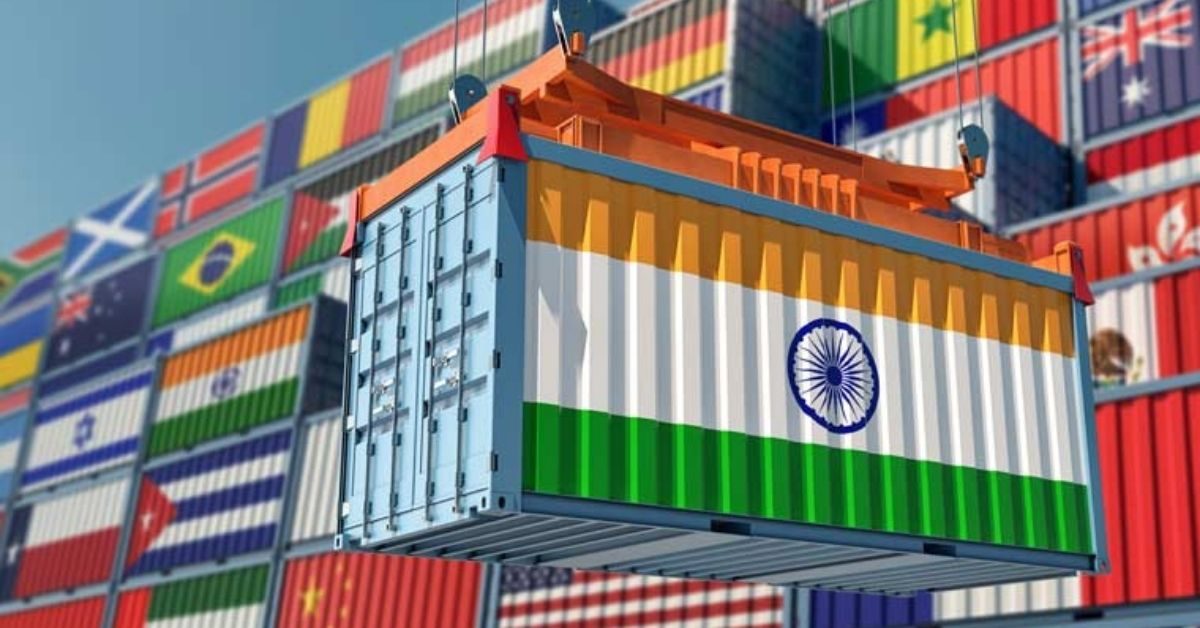Successful implementation of FTAs, rupee trade, export schemes, PLI may provide relief
India’s exports moved in tandem with the global trade in 2022, grew steadily till June, and then started to slow down. As Russia’s prolonged aggression in Ukraine and resurgence of Covid infections in China started taking a toll on the world economy in the second half of the year, India’s trade prospects, too, came under a shadow.
Going forward, 2023 is likely to be full of challenges for exporters, with the WTO revising its world trade growth forecast to just 1 per cent from the previous estimate of 3.4 per cent.
Rising interest rates globally, skyrocketing inflation and major economies facing the threat of sliding into recession, are some of the key reasons behind deceleration of demand.
The Indian government, however, is optimistic that its new free trade agreements signed this year, including ones with the UAE and Australia, will start delivering concrete results soon, helping Indian exporters make up for possible fall in demand from its traditional buyers.
New Delhi is also in advanced negotiations for FTAs with the EU, the UK and Canada, and there is hope it will be concluded in the new year, resulting in greater market access for Indian goods and services.
In fact, finalising trade pacts with developed nations is part of India’s broader strategy to achieve the target of doubling exports of goods and services to $2 trillion by 2030.
But whether the new pacts, resulting in lowering of import duties in partner countries will be enough to help exporters gain more orders, remains to be seen. Some economists argue that with slowdown in global demand, it is very important for exporters to become price competitive. The government’s role in bringing down cost of operation through greater ease of doing business and by generous implementation of export incentive schemes could be crucial in building competitiveness.
The government’s Production Linked Incentive scheme, too, could play an important role in making production efficient by building in economies of scale through large-scale manufacturing, but its success in most sectors is still to be tested.
Commerce & Industry Minister Piyush Goyal, at a recent media event, acknowledged that external headwinds such as high inflation in Western countries and declining growth momentum, will have some adverse impact on Indian exports. But exports of goods will still post an annual growth rate of 10-12 per cent, he had said.
Last fiscal, India’s exports grew over 40 per cent to touch an all time high of $422 billion. Besides the slowdown in exports, other areas of concern for the government include India’s rising imports, growing trade deficit and depleting foreign exchange reserves.
The ‘Atmanirbhar Bharat’ drive to reduce imports by promoting self sustenance is targeted towards bringing down the import bill. But the government has to walk the tight rope to ensure that the hit the user industry takes when import duties are increased or other restrictions imposed, should not end up hurting the economy more than the potential gains.
The rupee trade mechanism, rolled out by the RBI in July this year to enable invoicing of exports and imports in Indian rupee, could play an important role in saving precious foreign exchange.
The mechanism is in advanced stage of implementation with Russia, which is keen on rupee trade to avoid growing banking sanctions imposed by the West following its attack on Ukraine in February this year.
Successful implementation of rupee trade with Russia will serve a dual purpose. It will help India pay for its rising oil imports from Russia, which is now one of the top oil and gas exporter to India because of steep discounts offered. It will also help increase India’s exports.
Russia, in fact, is in talks with India to source more products so that the growing trade deficit, estimated at about $23 billion in April-October 2022, can be narrowed and some of the rupee payment made by India for oil could be used up.
India is also in talks with neighbouring countries such as Sri Lanka, Maldives and Mauritius, to operationalise the mechanism. While grappling with ways to deal with the uncertainties in the global economy, India will also have the opportunity to steer discussions on issues affecting the world as president of the G20 bloc for a year. In the various meetings planned through 2023, India must use its presidency to push forward the interests of the developing world and lend urgency to issues such as climate finance and inclusive growth.







